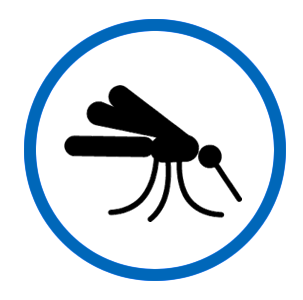Prompt diagnosis and appropriate care for malaria could prevent over 300,000 deaths of children under five each year.1 Fact Sheet: World Malaria Report 2015
World Health Organization
2015 This is an occasional, often seasonal, behavior that needs to be practiced within 24 to 48 hours of the onset of suspected symptoms.

Care for Malaria
Caregivers appropriately manage care for signs and symptoms of Malaria for children
Key Points from Global Research
- Quality provider care, accurate diagnosis, treatment and counseling ensure caregivers respond better and return as needed because they feel respected and have confidence in a provider’s ability to help their children.
- Easy and continual access to qualified providers and medicines encourages caregivers to seek care within 24 hours of a fever, instead of waiting until their child’s condition worsens.
- Support from community members assures that caregivers can seek care and fully complete prescribed treatments.
Behavior Profile Sample: Care for Malaria
A Behavior Profile is a summary analysis of each behavior. This sample draws from global evidence and illustrates the result of using the Create Behavior Profiles Tool to analyze factors, supporting actors and strategies and to ensure logical pathways exist between strategies proposed and factors related to the practice of the behavior. This sample may be used as a starting point or reference for creating Behavior Profiles.
| Improve maternal and child survival | |
|
Caregivers appropriately manage care for signs and symptoms of Malaria for children Among children under age five with fever in the two weeks preceding the survey, percentage for whom advice or treatment was sought from a health facility or provider
|
Behavior Analysis |
Strategy | ||
|---|---|---|---|
STEPSWhat steps are needed to practice this behavior?
Click on any box |
FACTORSWhat factors may prevent or support practice of this behavior? These should be analyzed for each country context.StructuralAccessibility: Clinics are often far from homes and the journey to one is only undertaken when local options are exhausted Accessibility: There is a lack of stock and regulation of malaria diagnostic and treatment supplies in the public and private sector Service Provider Competencies: Caregivers perceive quality of care received as inadequate as providers often make diagnosis based on symptoms instead of proper diagnostics Service Provider Competencies: Caregivers are often treated poorly by providers and do not want to seek their help SocialNorms: Childhood illness is frequent and normalized so many delay seeking care until the illness is severe InternalAttitudes and Beliefs: Caregivers often prefer to seek care from unqualified providers who are closer and cheaper Knowledge: Many caregivers do not understand that while malaria is common, careseeking and treatment within the first 24 hours can help prevent death and other serious complications of the illness (convulsions, not eating, lethargy and vomiting) |
SUPPORTING ACTORS AND ACTIONSWho must support the practice of this behavior?InstitutionalLogistics Personnel: Ensure that malaria diagnostic and treatment supplies are available Providers: Use all interactions with caregivers to counsel on malaria, treatment, danger signs and when to seek care Providers: (Public and Private) treat caregivers respectfully Providers: Correctly diagnose malaria using rapid diagnostic tests or slide microscopy and correctly prescribe anti-malarials only for positive results |
POSSIBLE PROGRAM STRATEGIESHow might we focus our efforts based on this analysis?Enabling EnvironmentFinancing: Establish transportation systems and transport within communities Policies and Governance: Establish and enforce clear malaria drug policies Systems, Products and ServicesSupply Chain: Set up effective supply chain and quality control systems to public and private sectors to ensure diagnostic tools and treatment for other febrile illnesses are available Quality Improvement: Train providers to adhere to test results and ensure treatment as per national guidelines, and explain protocol to caregivers Demand and UseCommunication: Develop essential materials package, e.g. adherence reminders, symptoms, danger signs, etc. Explore distribution during ANC visits and immunization Collective Engagement: Conduct community mobilization activities for caregiver and caregiver support systems around malaria care seeking, diagnosis, treatment and counseling |
Global Status of Accelerator Behavior
Among children under age five with fever in the two weeks preceding the survey, percentage for whom advice or treatment was sought from a health facility or provider
Demographic and Health Survey, Malaria Indicator Survey
